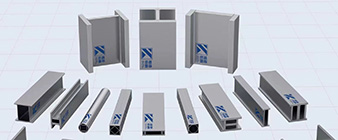The laser welding manufacturing process for Titanium Grade 2 (Ti Gr 2 / 3.7035) involves multiple steps and precautions to ensure the quality and integrity of the weld. Here is an overview of the process:
Preparation
– Material Cleaning: Clean the titanium surface to remove any contaminants such as oil, dust or oxides. This can be done using solvents or chemical cleaners.
– Edge preparation: Depending on the joint design, the edges may need to be beveled or shaped to promote better penetration and fusion during the welding process.
Welding parameters
– Equipment selection: Use a suitable laser welding system, usually a fiber laser or Nd:YAG laser, that allows for precise control of heat input.
– Jig design: The titanium parts are secured in a jig to maintain alignment and prevent movement during welding.
Welding parameters of Huanggang Special Steel
– Laser power: Select the appropriate laser power based on material thickness and joint configuration. The power setting range of Huanggang Special Steel is from 10,000 to 20,000 watts.
– Welding Speed: Adjust the speed of the laser beam to control heat input and prevent overheating or undercutting. Typical speed range is 1 to 10 mm/s.
– Focus position: Correctly focus the laser beam to achieve optimal energy density at the welded joint.
Welding process
– Beam movement: The laser beam moves along the seam, melting the substrate and forming a molten pool. The heat generated by the laser also helps fuse the materials together.
– Shielding gas: Use an inert shielding gas (such as argon) to protect the welding area from oxidation and contamination during the welding process.
Post-weld treatment
– Cooling: Allow the welded joint to cool naturally to avoid introducing stress or distortion.
– Inspection: Non-destructive testing (NDT) methods such as ultrasonic or radiographic testing are performed to ensure the integrity of the weld.
– Surface Preparation: If necessary, perform surface preparation to remove any discoloration or oxidation that may have occurred during the welding process.
– High precision: Laser welding allows precise control of heat input, minimizing distortion and ensuring high-quality welds.
– Minimum heat-affected zone (HAZ): The focused laser beam limits the heat-affected zone and reduces the risk of material property changes.
– Speed: Laser welding is typically faster than traditional welding methods, increasing productivity.
– Automation: The process can be easily automated, thereby increasing production consistency and repeatability.
– Material properties: The unique properties of titanium require careful control of welding parameters to avoid problems such as embrittlement or cracking.
– Cost: The initial investment in laser welding equipment can be high, but the benefits in efficiency and quality often justify the cost.
Skills Required: Operators require specialized training to operate laser welding equipment and understand the nuances of welding Titanium Grade 2.
If you have other questions or need more details, please feel free to ask Peak Kong Special Steel!
-
 2024-9-25 SMO254 vs. 1.4547 Super Stainless Steel for Structural Applications
2024-9-25 SMO254 vs. 1.4547 Super Stainless Steel for Structural Applications -
 2024-9-20 Application of Ti Gr 7/3.7235/UNS R52400 Structural Stations
2024-9-20 Application of Ti Gr 7/3.7235/UNS R52400 Structural Stations -
 2024-9-24 High-strength H-piles UBP305*305*223kg/m/UBP305*305*283kg/m
2024-9-24 High-strength H-piles UBP305*305*223kg/m/UBP305*305*283kg/m -
 2024-9-29 UNS N06455 structural profile applications
2024-9-29 UNS N06455 structural profile applications -
 2024-9-24 ASTM A514 Structural Steel Section
2024-9-24 ASTM A514 Structural Steel Section -
 2023-12-12 S690 QL/S690 QL1 high strength structural steel
2023-12-12 S690 QL/S690 QL1 high strength structural steel -
 2023-12-12 Technical application of high-strength S690 steel profiles
2023-12-12 Technical application of high-strength S690 steel profiles



